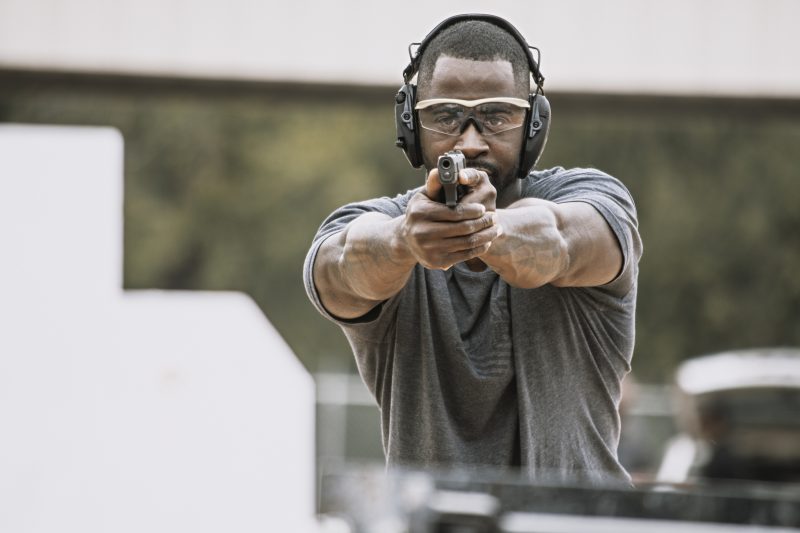
How you hold the gun affects accuracy and your ability to put multiple shots on target.
![]()
![]()
The grip is the foundation of successful shooting, whether for competition or self-defense. How you hold the gun influences many facets: recoil management, follow-up shots, even malfunctions. Not all grips are created equal. Rather than compare bad grips, let’s look at how to build a great grip that will help you shoot better.
Grip it with Purpose
Why do we care about a detailed explanation of how to hold a gun? Does it really matter? Won’t any old grip work fine so long as the bullet hits the target? Not exactly. While how we hold the gun won’t directly affect how the firing mechanism works (it will still go bang), it can affect how accurately we shoot and how easily we can put a second, third, or more shots on target.
Thanks to barrel rifling and overall tight machining tolerances, modern firearms are extremely accurate. Put even the cheapest gun in a vice and fire it, it will hit the target dead center every time. The reason guns miss the vast majority of times is not the gun but the shooter. We are the main cause of inaccurate shots. And a lot of it comes down to how we hold the gun.
Preventing Malfunctions
Let’s start with malfunctions. Contrary to popular belief, the main cause of malfunctions, in particular stovepipes and failures to eject, is not the gun or bad ammo. It’s the shooter. Yes, we often create our own malfunctions. How so?
The slide is designed to operate as horizontally as possible. It wants to go back and forth on a completely flat line. Obviously, that doesn’t happen when we shoot because the gun recoils and the muzzle rises. But we can control how much it rises to affect the likelihood of the gun running smoothly.
While there is no magic angle at which every gun will malfunction, typically malfunctions happen if recoil rocks the slide above 45 degrees because it is no longer working efficiently. Stovepipes, for example, are often caused by the slide rising so high that it snags the spent casing ejecting from the port, preventing it from clearing the top of the gun before the slide comes back forward. By controlling the muzzle rise, we can keep the slide out of the way of flying brass. That’s just one example of how shooters create malfunctions in an otherwise healthy gun.
How do we control the muzzle rise so that doesn’t happen? The same way we improve accuracy: It’s all in how we grip the gun.
Thumbs Forward
The most widely accepted grip today is often called the “thumbs forward” grip because when your hands are lined up correctly your thumbs are pointing forward toward your target. While it may seem odd that we care about thumbs since they don’t pull the trigger, the concept will make more sense as we examine what each hand does and how the thumbs end up facing forward.
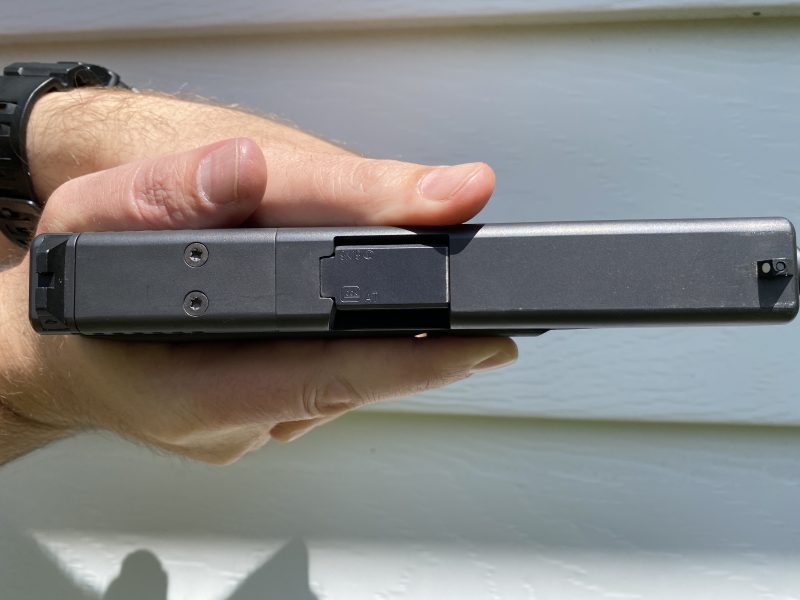
Whether you are lefthanded or righthanded, the grip is the same. All you do is switch hands. For the sake of simplicity – and since most people are righthanded – we will discuss a righthanded grip. If you are lefthanded, simply swap the hands; everything is the same, just reversed. Let’s break down the grip step by step to show exactly what each hand does.
Dominant Hand First
To create a strong grip, begin by wrapping your right hand around the grip of the gun with the web that spans between your thumb and trigger finger up as high as you can get it under the beavertail at the top of the backstrap, as seen in this pic.
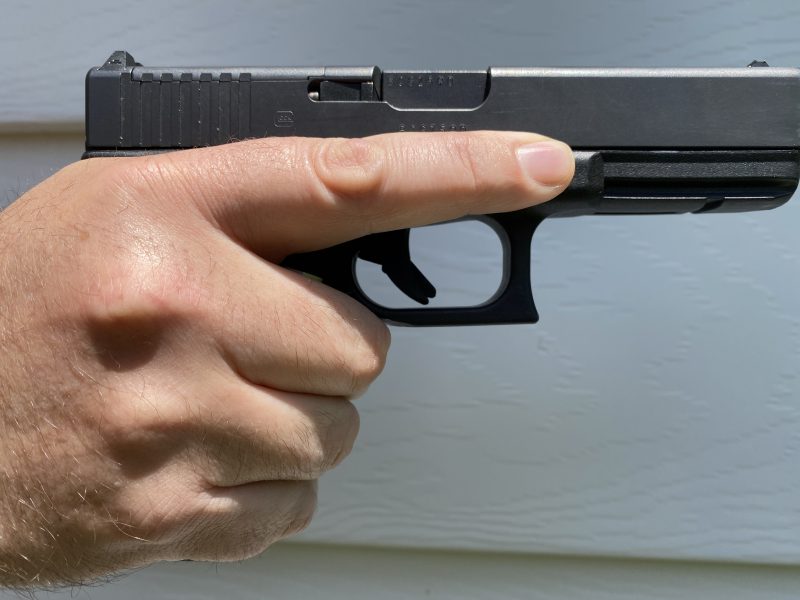
By placing your hand this high on the gun, you raise the fulcrum of the lever that the gun makes when it recoils. Be sure to close the gap between your hand and the beavertail as tightly as possible. There should be no space in between. If your hand is lower than this, the gun will rise too much on recoil.
Your trigger finger should rest alongside the rail, not on the trigger, and your other three fingers should wrap around the front of the grip, with your middle finger touching the bottom of the trigger guard.
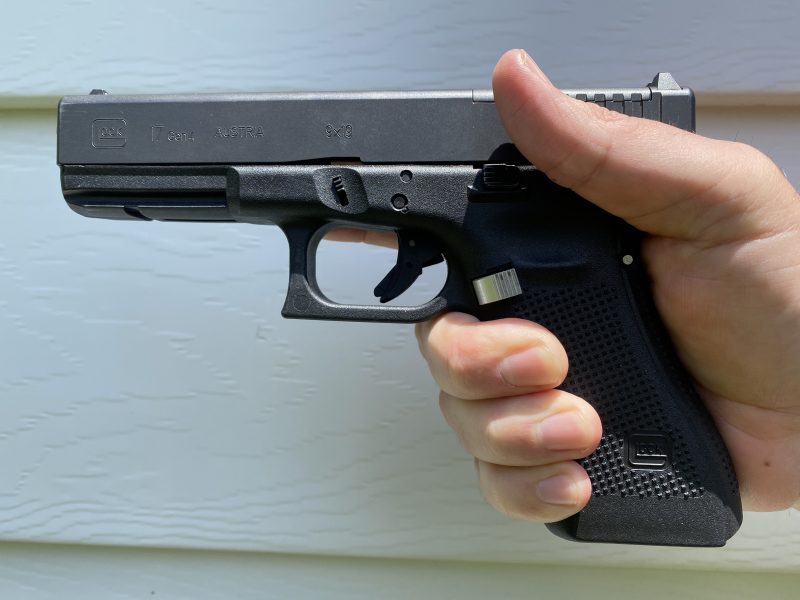
As for your thumb, well, it’s going to be very lonely. It doesn’t do a whole lot. For the most part, it’s fairly ornamental. Call it digital eye candy. But don’t worry, we will get back to it in a minute. For now, park it straight up in the air.
Add Your Support Hand
Now that your right hand is in place, it’s time to add your left hand. To do this, place the butt of your left palm into the gap on the grip so you feel the texture against your hand. If you can’t feel the grip texture, adjust your hand until you can. This may require canting your hand slightly forward and down, which will feel awkward at first but gets more comfortable the more you do it. The reason for adding your hand in this manner is to maintain total control over the gun and equal pressure from both hands as you shoot. This will improve your accuracy.
Now wrap your left-hand fingers around your right-hand fingers, with your left index finger snuggling up against the bottom of the trigger guard. Resist the temptation to place your left index finger on the front of the trigger guard as that could adversely affect your accuracy.
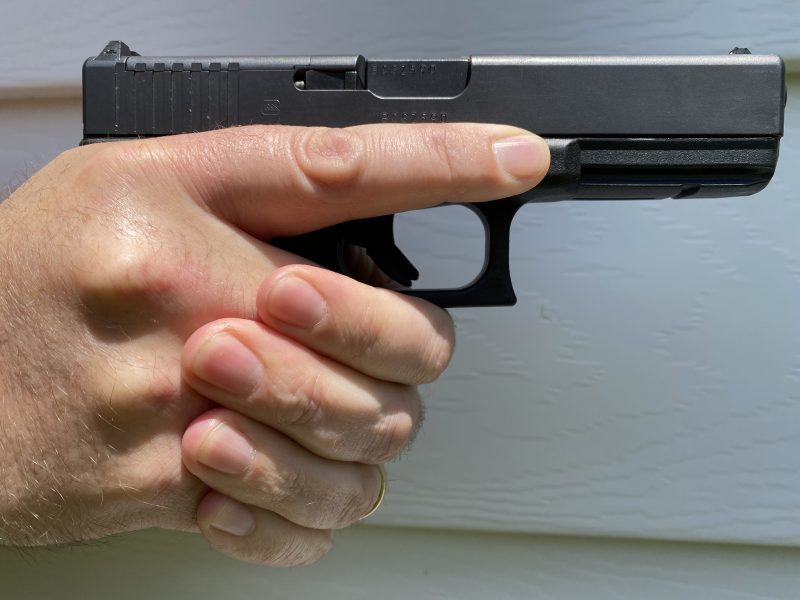
Two Thumbs Up – and Forward
Now that your hands are in place, what about those thumbs we abandoned a few paragraphs back? Where do they go now?
They were pointed straight up, but now lay them lightly against the slide and rail, not applying any pressure to the gun, with the right thumb on top of the left so they form mostly parallel lines pointing forward. It is critical to keep the right thumb above the left thumb to maintain the left hand’s contact with the grip. If the thumbs swap, the left hand comes off the grip and will no longer apply equal pressure, sacrificing some of the strength in the grip. This seemingly slight adjustment could let the gun rise too much from recoil.
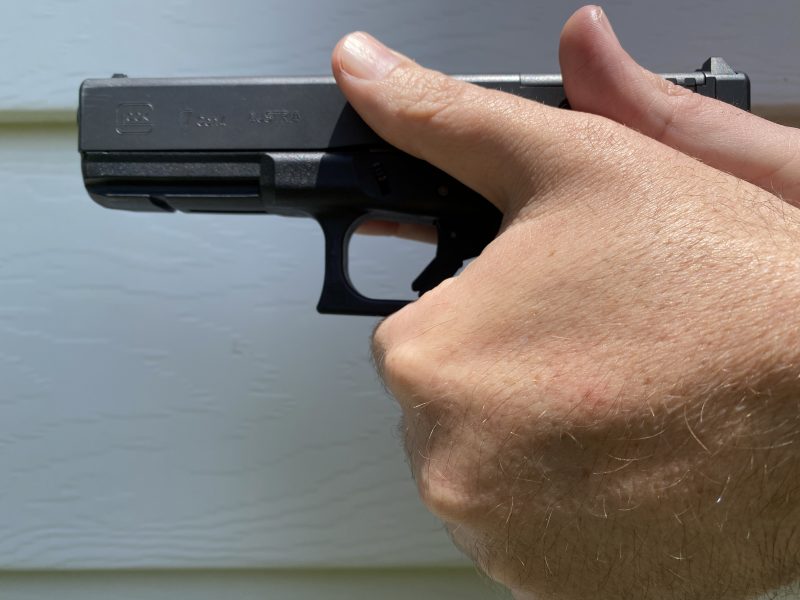
NEVER put your thumb behind the slide! If you do, the first time you pull the trigger and the slide moves, it will slice across the top of your knuckle, leaving behind a set of bloody railroad tracks and emotional scars to last a lifetime. If you do this, you will only do it once, a lesson quickly learned.
Establishing the Grip Out of the Holster
A good grip starts the moment you touch the gun. When drawing from a holster, start with your right hand already high on the backstrap, up against the base of the beavertail as mentioned above when the gun is still inside the holster. Establishing this position allows the rest of your right hand to naturally fall into line as the gun comes out. For more on adding your other hand through the draw, check out this post.
Improved Accuracy and Fewer Malfunctions
At first, this grip may feel strange because it’s new. Old habits are hard to break, but easier if you replace them with good ones. Once you have mastered this grip and incorporated it into your shooting practice, you will see a marked improvement in accuracy and a sharp decline in common malfunctions.
ABOUT THE AUTHOR:
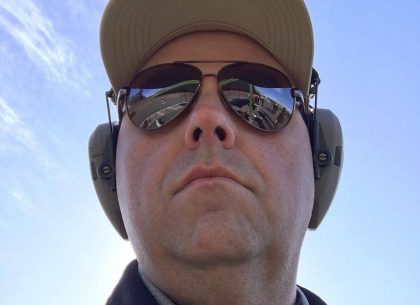
David Workman is an avid gun guy and a contributing writer to several major gun publications. As an NRA-certified instructor, David trains new shooters on basic handgun skills and CCW requirements and is a strong advocate for training as much as you possibly can. “Real-life shootouts don’t happen at a box range.”
![]() You may also enjoy these popular articles:
You may also enjoy these popular articles:
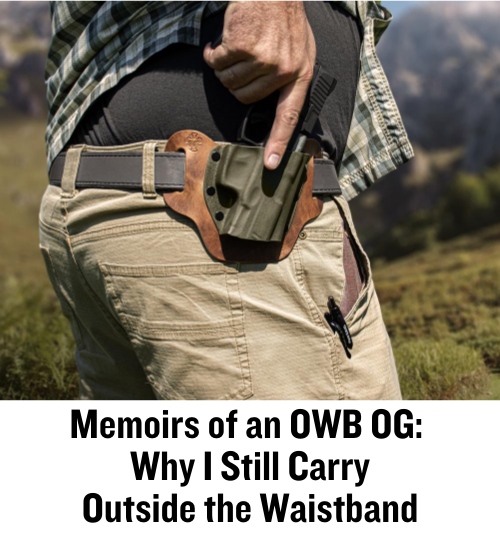
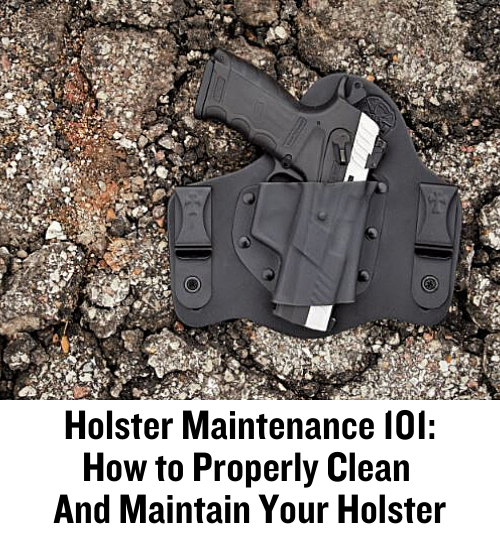
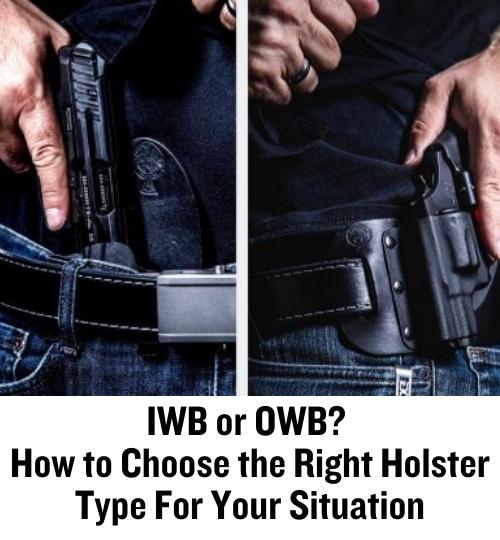
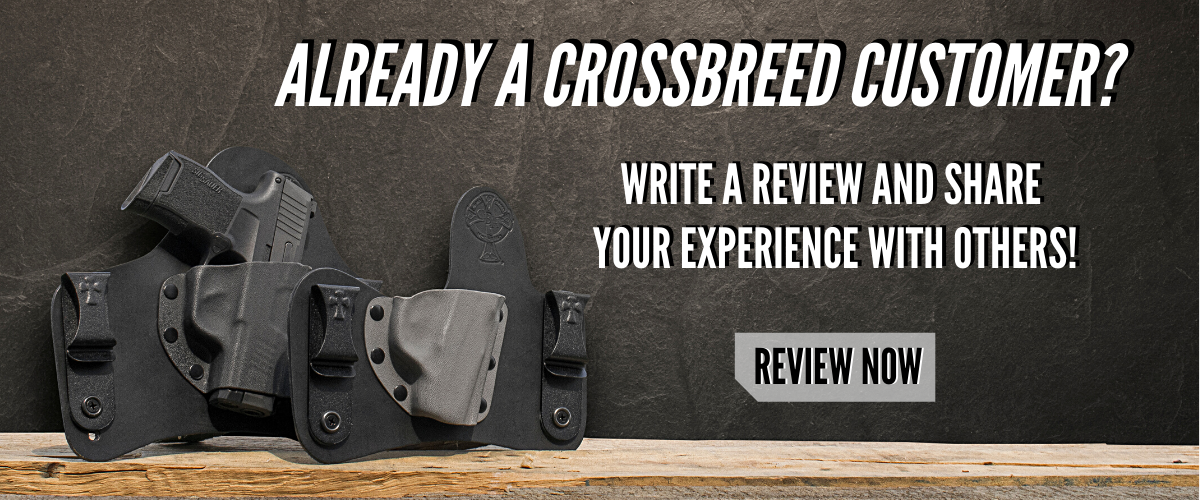
©MTC Holsters, LLC and CrossBreed Holsters Blog, 2021.
Unauthorized use and/or duplication of this material without express and written permission from this site’s author and/or owner is strictly prohibited. Excerpts and links may be used, provided that full and clear credit is given to David Workman and the CrossBreed Blog with appropriate and specific direction to the original content.
![]()

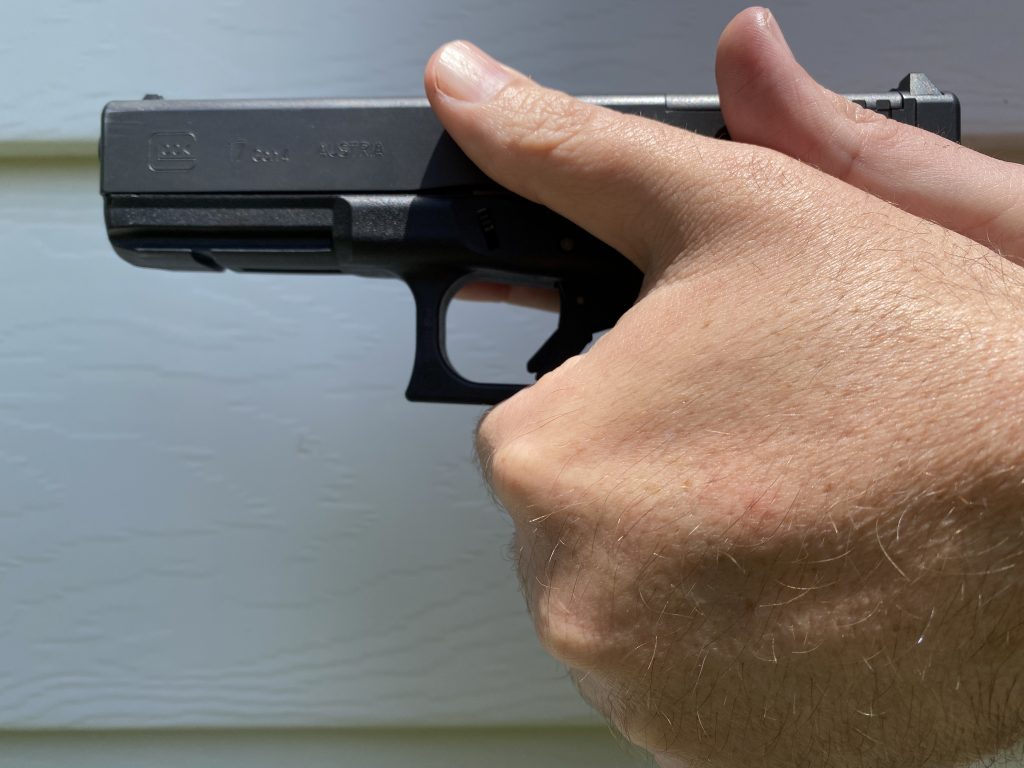
This article content is really unique and amazing. This article really helpful and explained very well.
This is a very helpful site for anyone, each and every man can easily operate this site and can get benefits.
This is a great article, well done, very much appreciated. hokabet คาสิโน
Your work is very good and I appreciate you and hopping for some more informative posts.